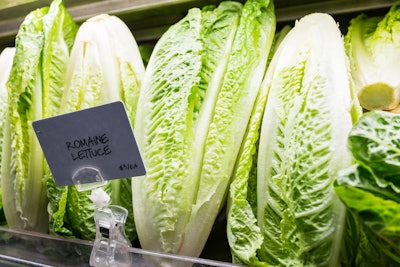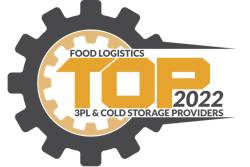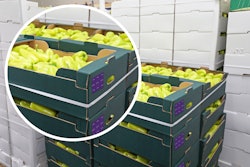
It seems like the technology behind cryptocurrencies like Bitcoin shouldn’t be related to leafy greens, but the FDA says otherwise. At the beginning of February, the agency introduced the Food Safety Modernization Act Proposed Rule for Food Traceability to more rapidly and effectively help identify the recipients of certain foods. The proposal is part of the agency’s New Era of Smarter Food Safety Blueprint.
The rule doesn’t require companies to create and use electronic records, but the agency does recognize the need for more widespread use of technology to reduce foodborne illness incidents.
One major problem with the current food traceability system is the existence of multiple data versions, leading to mistakes and disputes about the source of contamination. Currently, the FDA only requires that food suppliers know the immediate source of a food product and where they sent it. Many of these so-called one-up/one-back records are stored on paper on spreadsheets.
In contrast, each stakeholder who needs access to the data in a blockchain receives a digital ID so that access and changes are recorded as separate entries. This creates immutable digital records that prevent data duplication and transaction modification and are quickly and easily accessible in the event of a food-related outbreak.
Details on the proposed rule
The proposed rule applies to companies that manufacture, process, pack or hold foods on the food traceability list. There are 16 foods on the list, including items like shell eggs, oysters, soft and semi-soft cheeses and leafy greens, which have been a source of foodborne illness outbreaks in the past. According to Boston Consulting Group, those foods account for 20-30% of the food consumed in the United States. Under the rule, companies would need to “establish additional traceability recordkeeping requirements (beyond what is already required in existing regulations).”
Specifically, companies would establish records containing key data elements (KDEs) associated with various critical tracking events (CTEs). FDA says the KDEs will vary depending on the CTE being performed and gives a brief description of each CTE -- growing, receiving, creating transformation and shipping.
The rule would also require companies to establish and maintain traceability program records, including a description of relevant reference records, a list of foods on the food traceability list that is shipped, a description of how traceability lot codes are assigned and other information needed to understand data provided within the required records.
How blockchain can help
In 2018, Walmart, Nestlé, and others in the food industry launched Food Trust, which was essentially a test to see if blockchain could help the group preserve one consistent history of a food item’s path to the grocery store. The use of blockchain varies by the member, but a much larger set of companies must participate in scaling up blockchain-based food tracing.
The combination of new blockchain technology aimed at food suppliers and the proposed rule may be enough to push large and small industry players into participating. Here are some steps companies can take to prepare:
- Keep abreast of the proposed regulation as it undergoes modification on its way to the final rule.
- Through industry groups, encourage companies of all sizes to explore blockchain technology (also called distributed ledger) and its benefits. Additionally, advocate for a system that offers a high degree of flexibility and interoperability to accommodate participants' many types and sizes.
- Encourage suppliers and customers to consider the efficiencies to be gained by moving away from paper- and spreadsheet-based systems.
- Understand what you’ll need to do to prepare your systems to participate in blockchains.
Preparing your systems first means taking the time to understand the technology. A good next step is looking at how a given blockchain will integrate with your existing systems, including IT and personnel training.
Getting started
Some blockchain vendors offer a “freemium” model so that companies can try out the system before they buy (make sure there’s no commitment to use the software after the trial period). Typically, a more prominent player in the food supply chain will create a system to track incoming food products and invite growers and suppliers to join. The cost for the larger enterprise is mitigated by eliminating their outdated, fragmented systems and the price for the smaller operations is reasonable.
Look for a cloud-based blockchain system that includes a dashboard that shows an overview of the transactions and events associated with a particular product. Another essential feature is real-time alerts that update you on a product’s location. It should also be easy to add new organizations to the chain (e.g., just sending an email invite).
Finally, note that once a blockchain is established to improve traceability, it provides additional benefits. It eliminates supply chain loopholes, helping every participant become aware of possible events affecting the flow of goods. It also helps identify storage issues, reducing or eliminating spoilage.

















